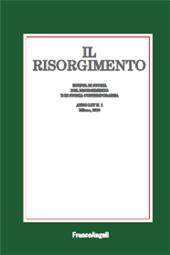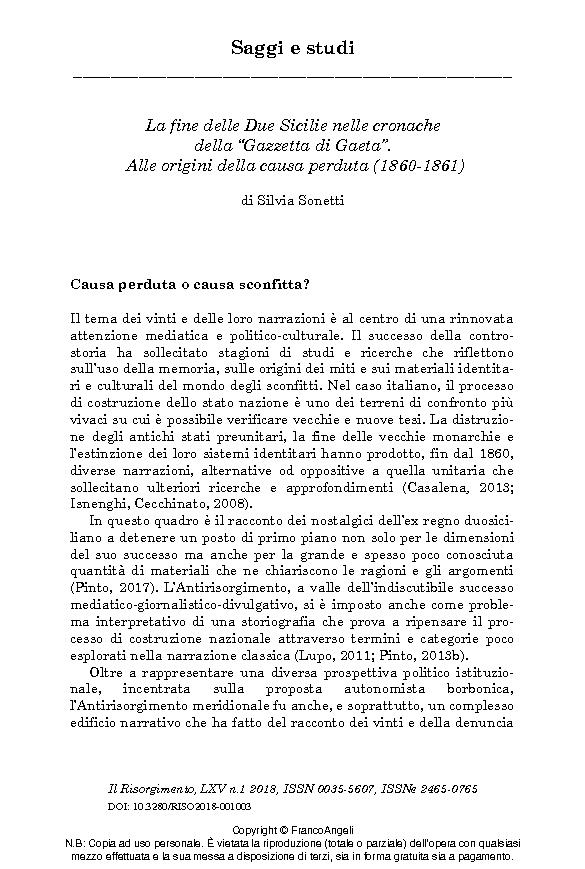La fine delle Due Sicilie nelle cronache della Gazzetta di Gaeta : alle origini della causa perduta (1860-1861)
23-55 p.
L'assedio di Gaeta fu l'ultimo atto del Risorgimento datato al 1861. Nei circa centocinquanta giorni del conflitto, consumato dal novembre 1860 al febbraio 1861, la monarchia borbonica riscattò l'onore della dinastia e del Regno ormai perduto e, nell'epopea, innalzò la vicenda del Regno meridionale dal piano della storia a quello del mito. Gaeta costituì lo scenario perfetto da cui far partire la storia degli sconfitti: l'assedio configurò l'impalcatura politico-ideologica che giustificò la resistenza e trovò la sua naturale espressione nel nuovo giornale ufficiale del governo in esilio. La Gazzetta di Gaeta fu lo strumento principale attraverso cui l'autorità borbonica affermò le ragioni e gli argomenti della guerra del legittimismo meridionale. Nel giornale la cronaca dell'Antirisorgimento borbonico si intrecciò con i materiali identitari e simbolici tipici della causa perduta.
L'articolo intende ricostruirne il racconto proponendo tre possibili linee interpretative: la rappresentazione del governo e della monarchia, la percezione della guerra e il ritratto del nemico. [Testo dell'editore].
The siege of Gaeta was the last act of the Risorgimento dated to 1861. In the approximately one hundred and fifty days of the con-flict, consumed from November 1860 to February 1861, the Bourbon monarchy redeemed the honor of the lost dynasty and Kingdom and, in the epic, raised the story of the Southern Kingdom from the plane of history to that of myth. Gaeta constituted the perfect scenario from which to start the history of the defeated: the siege configured the political-ideological scaffolding that justified the resistance and found its natural expression in the new official newspaper of the government in exile. The Gazzetta di Gaeta was the main instrument through which the Bourbon authority affirmed the reasons and arguments of the war of southern legitimism. In the newspaper the chronicle of the Bourbon Antirisorgimento intertwined with the identifying and symbolic materials typical of the lost cause.
The article intends to reconstruct the story by proposing three possible lines of interpretation: the representation of government and monarchy, the perception of war and the portrait of the enemy. [Publishers' text].
Ist Teil von
Risorgimento : rivista di storia del Risorgimento e di Storia Contemporanea : LXV, 1, 2018-
Artikel aus derselben Ausgabe (einzeln erhältlich)
-
Informationen
ISSN: 2465-0765
KEYWORDS
- Causa perduta, Due Sicilie, assedio di Gaeta
- Lost Cause, Two Sicilies, Siege of Gaeta



